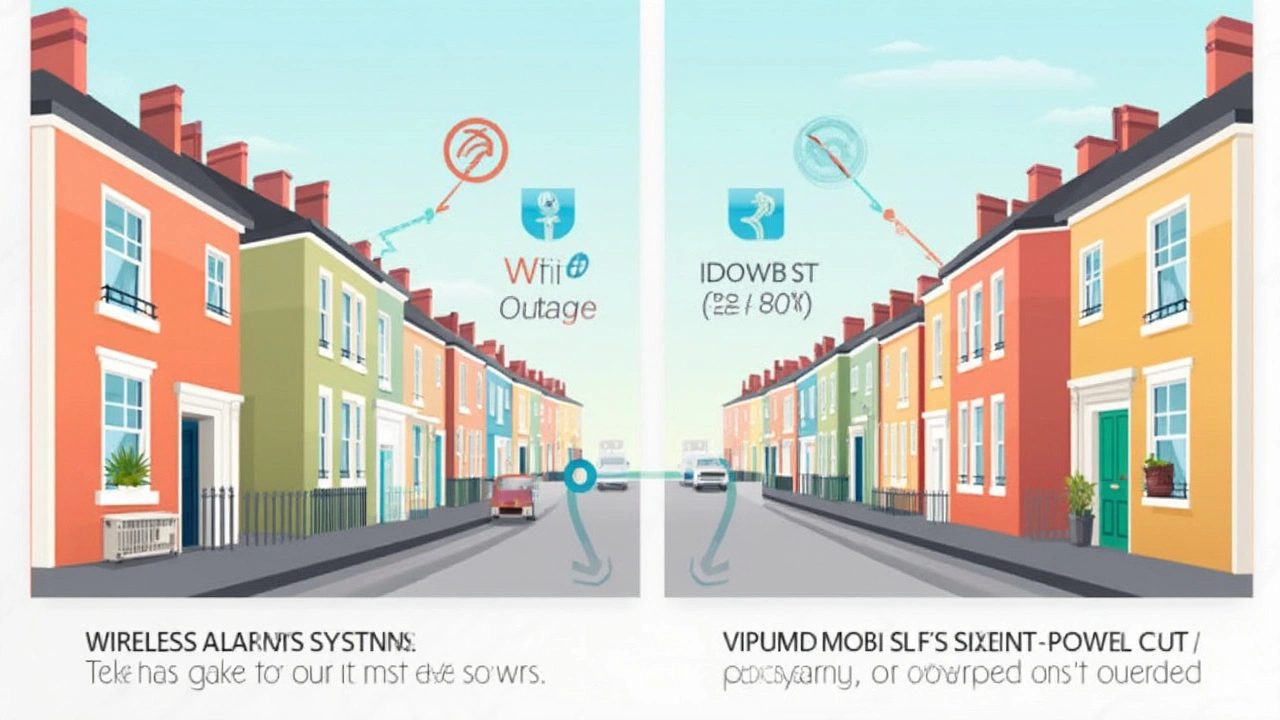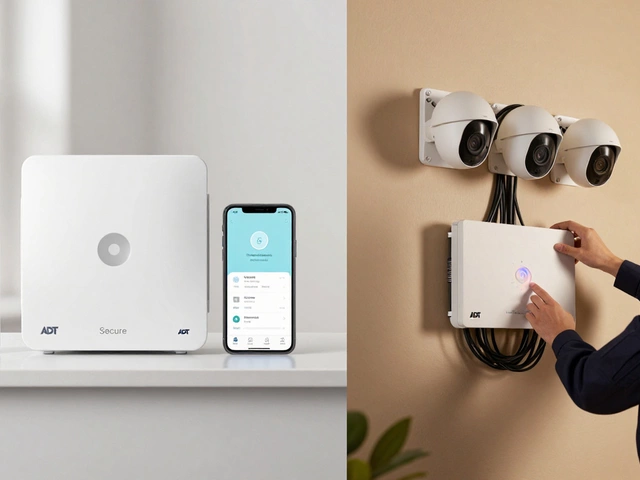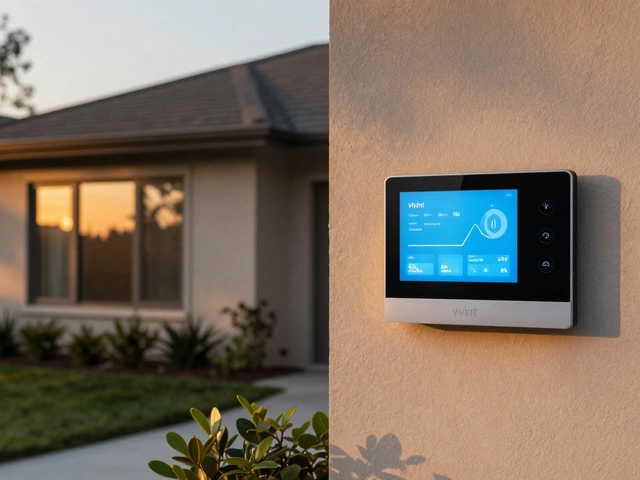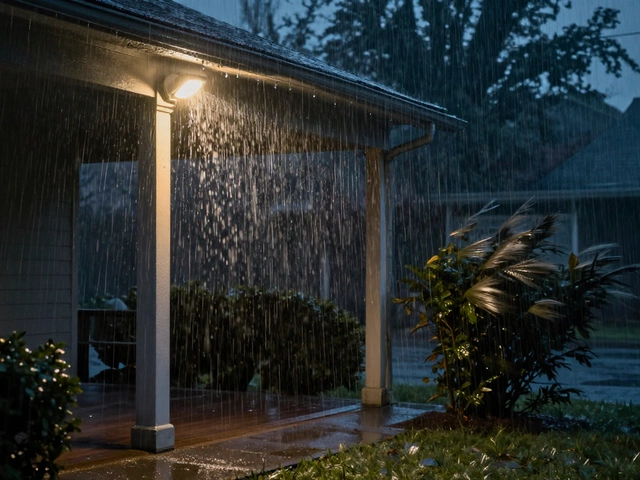Picture this: You're on vacation, your phone buzzes about a WiFi outage at home, and you wonder if your alarm is now just a useless box on the wall. You’re not alone. Wireless security alarms are everywhere, but a ton of people have no idea what happens when the internet goes down.
Let’s set things straight. Most wireless alarms are built with backup plans. They don’t instantly stop working—or worse, go off—just because the WiFi blips out for a bit. The whole point is to protect you even when things go sideways, not just when your internet is perfect.
But that doesn’t mean all alarms are bulletproof. Some rely on WiFi for sending alerts to your phone or a security company—others have cellular backup and keep chugging along even in a blackout. If you have a basic WiFi-only alarm, it might stop sending you phone notifications, but it’ll still make noise if it gets tripped by an intruder.
- What Really Happens When WiFi Fails
- Wireless Alarms: Not Just About WiFi
- Will the Alarm Still Trigger?
- How Notifications and Monitoring Work
- Boosting Your Security During Outages
- Common Mistakes and Smart Solutions
What Really Happens When WiFi Fails
If you've ever sat there staring at the spinning WiFi icon, you might assume your whole security setup is in big trouble when the signal tanks. Not quite. Most wireless alarms are built to keep working even if your WiFi goes down. The magic is in how these systems communicate and what kind of backup plans they have.
First, wireless alarm sensors—like your door or motion sensors—usually talk to the main control panel using radio frequency or Zigbee/Z-Wave, not your home WiFi. So, if your internet disappears, those devices are still doing their thing and sounding alarms if needed.
The main hiccup comes when your system needs to send an alert outside your house. If your alarm system only uses WiFi to push notifications to your phone or a monitoring service, then those alerts probably won’t get through until the internet comes back. But if your system includes cellular backup, it switches automatically, using 4G or even 5G networks, so monitoring centers or your smartphone still get notified.
- WiFi outage = sensors and alarms still work locally.
- Alerts to your phone or monitoring may pause unless cellular backup is built in.
- Self-monitored WiFi-only alarms can’t reach you during the outage.
Here’s an interesting stat: According to a 2024 consumer review, about 73% of all newly sold wireless alarm systems come with some type of cellular backup. It’s become almost standard because WiFi outages and router hiccups happen to everyone.
So the bottom line—your siren will still scream if someone opens a door while you’re offline. The weak spot is with remote notifications, unless your system has that backup option. Checking what kind of connection your alarm system uses isn’t just nerdy—it’s what keeps you in the loop no matter what your WiFi is doing.
Wireless Alarms: Not Just About WiFi
Here’s something a lot of folks get wrong—wireless alarms aren’t just tied to your home’s WiFi. While WiFi is a big part of most systems (it gives you things like app alerts and quick setups), it’s hardly the only thing keeping everything running. Many modern wireless security alarms are built to handle outages thanks to “multi-path” setups. That just means, if one way of connecting fails, there’s usually a backup.
The brains of a lot of wireless security systems include both WiFi and cellular chips. If the WiFi drops, the system automatically flips to a cellular network, which is kind of like giving your alarm its own phone plan. Some even have a battery backup, so a power cut doesn’t wipe everything out.
- Wireless alarms with cellular backup can send alerts even if you lose internet or electricity. It’s what a lot of pros recommend if you want better protection.
- Local alarms (the kind just making noise) don’t depend on WiFi at all. They’ll sound off with zero internet. No app notifications, but they still do the basic job.
- Hybrid systems can connect through Ethernet or even use landlines in rare cases—handy for those in spotty internet areas.
Take SimpliSafe and Ring: both offer models working with WiFi and cellular connections. If you're paying monthly, you get the cellular fallback if your router ever gives up. Some brands say over 60% of break-ins happen during the day when users are at work, so having that backup matters a lot.
If you’re shopping for a system, check what backups are included. Don’t just count on having a solid internet connection 24/7—tech hiccups happen. And make sure your backup (cellular or battery) is switched on from the start. You don’t want to find out the hard way during a real emergency.
Will the Alarm Still Trigger?
This is the big question and honestly where a lot of confusion starts. If your WiFi goes down, will someone breaking in set off your alarm? In almost every case, yes—your wireless alarms still trigger if they sense trouble, even with no internet connection. The basic system, like the siren and motion sensors, works no matter what’s going on with your WiFi.
Wireless alarm systems are designed to handle little hiccups like WiFi outages. When an intruder opens a door or crosses a sensor, the base unit gets a signal from the detector over radio frequency (RF). This local communication doesn’t use WiFi. So, if your WiFi router crashes, your alarm doesn’t just throw in the towel.
Here’s where things split:
- WiFi-only alarms: If all you have is WiFi for notifications, your system still makes noise (siren, beeps), but you probably won’t get push alerts on your phone or to the monitoring company until WiFi is back.
- Alarms with cellular backup: These switch over to cellular data, so you keep getting alerts, and monitoring companies stay in the loop.
Take a look at how different alarm features behave if WiFi is lost:
| Alarm Feature | Works Without WiFi? |
|---|---|
| Loud Siren | Yes |
| Motion/Contact Sensors | Yes |
| Mobile Push Alerts | Only if cellular backup |
| Professional Monitoring | Only if cellular backup |
| Camera Live Feed | No (depends on WiFi) |
Bottom line: if you’re counting on noise to scare off an intruder, you’re covered. But if you need remote alerts, always check if your system has a cellular backup or offline features. If you’re not sure what your system can handle, it’s time to dig into that user manual or contact your provider.

How Notifications and Monitoring Work
This is where things get interesting. Your alarm system can still make a ton of noise without WiFi, but if it can't tell anyone about the break-in, that's a problem. Here’s how the alert process usually works with today’s wireless alarms:
- WiFi Connected: When everything’s normal, the system uses your home WiFi to send instant alerts to your smartphone and sometimes to a professional monitoring service if you’ve got one.
- WiFi Drops, Cellular Steps In: A lot of modern alarms have a built-in SIM card—basically like what’s inside your phone. If your WiFi craps out, it jumps to cellular. Stats from a 2023 survey by SafeWise showed about 64% of new wireless systems shipped with this backup built in.
- No Cellular, Just Local Alerts: If your system doesn’t have that SIM card backup, it’ll usually still trigger the siren at home, but won’t reach your phone or the monitoring center till WiFi comes back. You might also see a flashing error light or get an alert when you reconnect.
For those wondering about reliability, here’s a quick comparison:
| Alarm Feature | Needs WiFi? | Works Without WiFi? |
|---|---|---|
| Local Siren | No | Yes |
| Push Notification | Yes | Only with cellular backup |
| Monitoring Center Alert | Yes | Only with cellular backup |
It’s always worth double-checking what kind of backup you’ve got. As Ben Bristow from Security Nerd puts it:
“The best wireless security systems today jump seamlessly from WiFi to cellular. For those that don’t, your phone alert might miss a real emergency if your internet’s down.”
Bottom line? Don’t just check if your alarm is loud. Make sure it can still reach you or a pro if your WiFi goes dark. Some brands let you see in the app whether your signal is strong or your backup’s working. Stay on top of those alerts to keep your place truly secure.
Boosting Your Security During Outages
If you want your security system to keep working when the WiFi drops, you’ve got to plan ahead. First off, check if your alarm has built-in cellular backup. Most big-name brands like SimpliSafe and Ring offer this—so if the WiFi goes out, your system switches over and keeps sending alerts. No signal? No problem, as long as you’ve got this feature turned on and, in most cases, paid for any needed cellular plan.
Backup power matters, too. A lot of security systems come with battery backups for when the power goes out—usually lasting between 12 to 24 hours. But don’t just assume it’s working. Once a year, test that battery and keep an extra one nearby.
Here’s what you can do to make your setup more reliable during outages:
- Pick a system with both WiFi and cellular connectivity.
- Regularly test your alarm while disconnected from WiFi. See if it still makes noise and if notifications show up on your phone.
- Keep your system’s firmware updated. Updates usually fix bugs that mess with connectivity or backup features.
- Set up physical alarms—think extra sirens or chimes—so people at home still get warned even if notifications can’t get through.
- If you’re using cameras, check if they record locally to an SD card, not just to the cloud. That way, you won't lose footage during a WiFi blackout.
According to a 2023 survey by SafeWise, about 38% of wireless alarm users have experienced at least one WiFi outage that lasted more than two hours. That’s not rare, so it’s worth running through how your system reacts when WiFi goes down.
You don’t need some expensive, fancy setup, either—a lot of basic steps can close the gap in your home’s protection. The wireless alarms that offer both cellular backup and loud local sirens strike a sweet spot for both flexibility and peace of mind during outages.
Common Mistakes and Smart Solutions
People often make the same few blunders when it comes to wireless alarm systems—and most of them are easy to avoid. Let’s go through the most common errors and how you can dodge them without breaking a sweat.
One of the biggest slip-ups is thinking your alarm will alert you no matter what. If you picked a system that only uses WiFi, it probably won’t call your phone during a WiFi outage. That means you might not know about a break-in until you get back online. Here’s where a system with a wireless alarms plus cellular backup could save you a lot of trouble.
Another mistake? Forgetting about battery backup. Plenty of alarms run on your home’s electricity, but that’s not helpful if the power (and WiFi) both go out. Always check if your alarm system has a battery that kicks in during outages—and if it does, swap those batteries at least once a year, just like you would with a smoke detector.
- Neglecting regular tests: Most folks set up their alarm and then forget it exists. Test it monthly. Manufacturers almost always have a quick test mode; use it.
- Overlooking software updates: Companies push out updates to patch holes and add features. Letting your system get out of date leaves you more vulnerable.
- Using weak passwords: Don’t stick with the factory password. A simple password is basically an open invitation to hackers.
Want smart solutions that actually make a difference? Try these:
- Go for a dual-path system that uses both WiFi and a cellular network. That way, you're covered even if one fails.
- Choose alarms that show you real-time network status on your app, so you’re never guessing about a connection problem.
- Set reminders to check for updates and test the system, maybe tie it to something you do every month, like paying your bills.
Just to put things in perspective, a recent report by SafeWise found that homes with backup communication for their alarms were 35% less likely to have security outages flagged by users. That’s a big edge you don’t want to miss out on.






